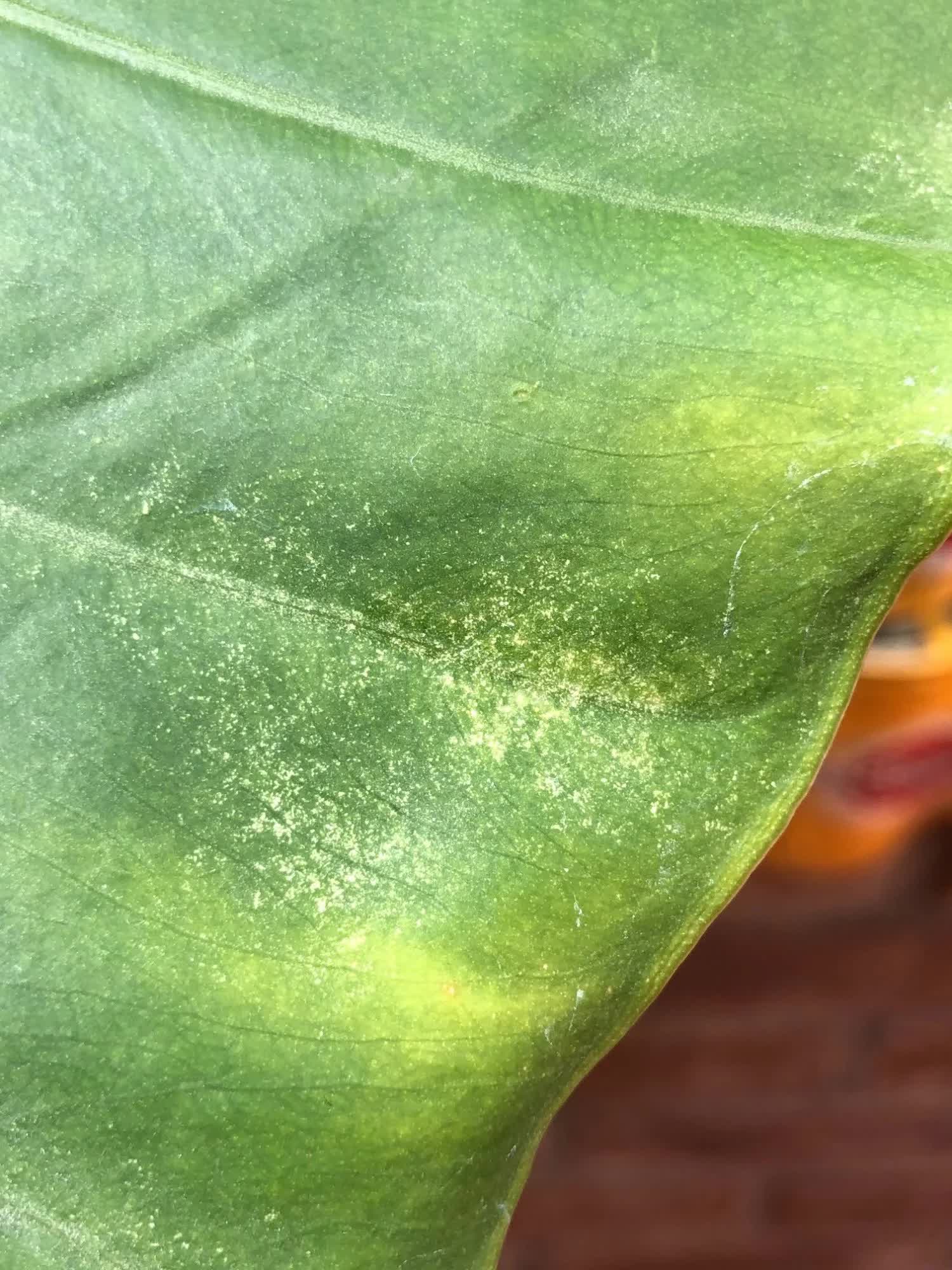Top Tips & Info
Eradication Difficulty - Difficult
Life Cycle - Up to fifty-five days.
The female can lay up to twenty eggs per day - one hundred & fifty in total.
Webs & Colonies will develop in cubbyholes, under-leafs and flowers.
Remove and crush all of the visible mites and webs using your fingers or a cloth.
Prune off the severely affected leaves and any flowers that house the infestation.
Take the plant outside and perform a gentle hose-down - aim at all of the cubbyholes and under-leaves for complete obliteration.
Allow the plant to dry off before applying either an organic or chemical-based pesticide.
Repeat the wiping, hosing-down and pesticide steps every 7 - 14 days for the next month, in this order. Keep the plant at least 1m away from others to avoid spreading the infestation.
Entirely eradicating the mites will be a long and challenging process to fulfil, but is still successful if you follow these top tips!
________________________________
Symptoms
At first, unless you specifically look for them, they'll go unnoticed due to their translucent minute bodies hiding in creases of the under-leaves. After a while, small clusters of webs will develop in these areas, trapping tiny bits of dirt or compost. Small transparent 'blotches' and mottled yellow leaves are other key symptoms to look out for. They'll spread onto the remaining parts of the leaves, or even onto other nearby plants, so action must be taken quickly.

Have a look at the intricate webs that'll form along the leaf's midrib.

Typical damage of Spider Mite.
Susceptible Plant Parts
Along the midribs (the central column that supports and nourishes the leaf)
Webs can develop in the creases of the under-leaf, to protect themselves from drying out by the direct sunlight.
In more severe cases, they'll infest the flowers or the junction between the leaves and stems.
All species are susceptible to Spider Mites.
________________________________
Actions Required
1. While using a damp cloth, destroy as much of the mites and their webs as possible. Any flowers must be removed along with the severely affected leaves or stems. Rub the cloth wholly across both sides of the leaves, focusing your attention to the under-leaves where the webs and eggs will lay.
2. Take the plant outside, GENTLY washing the entire plant using an outdoor hose. It's important to spray in at least three different angles to ensure thorough administration. Empathise the cubbyholes, under-leaves and between the stem and its petioles.
3. Repeat the first two steps twice a week for a month and decide if you're going to use a pesticide to help destroy the infestation. There are two options to choose from - organic or chemical-based pesticide.
4. Keep the affected plant away from others in a quarantined room until the symptoms have subsided for at least eight weeks. Always be wary of a relapse, and keep an eye out for possible outbreaks for several months after the last sighting.
N. B. - Although you should perform the wiping and hosing-down process BEFORE each pesticide application, you can wash the foliage at any given time to keep the infestation under control.
Organic Pesticides
Neem Oil is by far the most effective and used across the world. Not only will many online stores sell it, but it'll get to work after the first application. Simply dilute the liquid, (to the manufacturer's recommended strength) with water and/or dish soap and spray thoroughly onto the foliage and its cubbyholes. Any flowers must be removed instead of misted, due to the heightened chance of another infestation lurking in the background.
Neem Oil is widely used across the world, due to its great results and organic nature.
'Cinnamite' is a non-toxic pesticide derived from cinnamon oil, which should kill juvenile and adult mites, but NOT the eggs. After another quick hose-down, repeat applications every three days over two weeks, to ensure newly hatched eggs are destroyed.
Rosemary oil is a lesser-known pesticide that works wonders. Snip several sections of rosemary and bring to the boil for total infusion. Once the temperature is manageable for the plants, spray both sides of the leaves and repeat weekly. In the meantime, keep affected plants at least 50cm away from other specimens to avoid the infestation spreading. This method is also excellent for edible plants dues to the absence of chemicals.
Herbal Tea - Again, like rosemary water, drop a herbal teabag into the water and bring to the boil. Then, add crushed fresh garlic to the water, allowing it to stand until lukewarm. Spray both sides of the leaves and repeat weekly after a hose-down to keep the population down.
Insecticidal or Horticultural Soap is another popular pesticide on the market, and there are three versions to consider. The first way is by purchasing an RTU (ready-to-use) spray bottle, which can be immediately used on the plants. Although most garden centres will stock this, it's far more economical to purchase the second option - concentrated bottles. This method comes with pro's and con's but is far cheaper to use if you have multiple infestations. It's self-explanatory and highly beneficial for the outbreak as long as you use the correct levels of dilution - the only downside is its availability in local centres. It's best to buy this option online as there are many different companies to choose from, with some being cheaper than others. The final and most affordable way is by making it yourself;
There are three ingredients in creating your own insecticidal soap - a vegetable, tree or nut-based oil, non-fragrant dishwashing soap and tap water. Most oils are acceptable, with the most successful being vegetable, sunflower, neem and olive oil. Add two parts oil, one part dishwashing soap and eight parts water to create the dilution. Although it's best to fresh bottled water, tap water that has been allowed to sit for 24hrs is also fine. Spray the dilution wholly around the plant, empathising both the infestations and the potential-hit areas. This method must be performed weekly over a month or two, along with regular pest inspections - as soon as you see a web or mite, crush it.
Natural Predators - The last non-organic method is by acquiring adult ladybirds or green lacewings. Although buying insects may be deemed as cruel or inappropriate, it's a natural, and least time-consuming way to remove the pests. Many online stores will sell the insects, all at varying prices and quantities. Once you've obtained the predators, release them in different sections of the plant, favouring the most infested areas first. They'll make their way around your plant, digesting both the eggs and the adults, leaving you with a potentially pest-free plant. Keep the insects and plant in an enclosed transparent box throughout this period to increase the rate of digestion. Unfortunately, this method can take several days, if not weeks, to work and could even be unsuccessful, which is why other methods are favoured.







